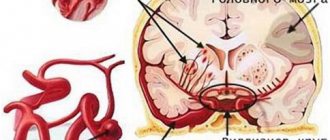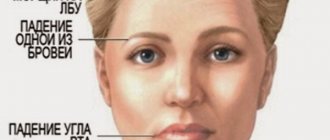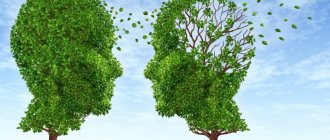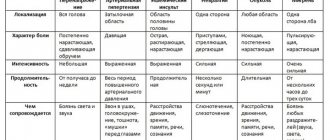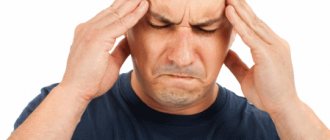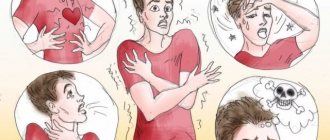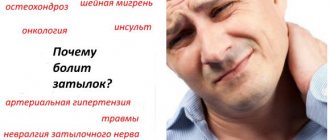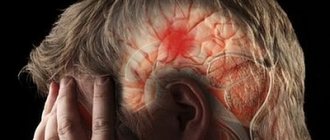Causes of stroke
Stroke is quite common in hypertensive patients and people suffering from migraine attacks.
Impaired blood supply to the brain can occur in a person, regardless of his gender and age, but some predispositions and diseases can provoke the manifestation of this disease:
- High blood pressure. Hypertension is the leading cause of stroke, since this disease provokes impaired blood circulation in the vessels, their deformation and fragility.
- Thrombosis. Thrombosis occurs when blood vessels are blocked by blood clots that prevent normal blood flow in the body.
- Cardiovascular diseases. Heart diseases can present with a variety of symptoms, and their long-term development has a detrimental effect on the circulatory system.
- Diabetes. People with diabetes are several times more likely to have a stroke (diabetics often suffer from atherosclerosis, and water imbalance negatively affects blood density).
Average blood pressure readings
If a person wants to know below or above what indicators blood pressure should be, he should get acquainted with the average data. They are derived from clinical studies, but should not be considered completely correct. In some cases, cardiologists’ patients develop constant “working” indicators, which they must report even to emergency physicians. What data has been established in practice?
- Up to 40 years – 120/60;
- After 40 years – 140/80.
The data indicated is suitable for most people, so they are taken as a starting point. If chronic diseases are identified, the data can easily change. For this reason, you need to check your own pressure when you are feeling well in order to accurately find out your individual indicators.
High blood pressure and stroke
Anyone suffering from high blood pressure needs to pay more attention to their condition, since hypertension increases the likelihood of a stroke. There is no need to let hypertension take its course and put off treatment “for later.” With high blood pressure, the blood vessels narrow greatly and blood pressure increases. There is a colossal load on the heart, and the walls of blood vessels begin to collapse. A blockage may occur, in which the vessel also loses its elasticity and becomes fragile.
People who suffer from hypertension are 4-6 times more susceptible to stroke, and in addition, the severity of this pathology increases many times over in chronic hypertensive patients
What blood pressure should be after a stroke?
High blood pressure after a stroke in a patient should not persist for more than the next two days. If a decrease is not observed, then a relapse may occur after a few days. If blood pressure remains high, it is lowered with the help of special medications.
After hemorrhage, blood pressure should not rise above 150 mmHg . This will help prevent pathologies and a second blow. If the pressure does not decrease despite taking medications, then over the next 3 months the patient with hypertension may have a new attack with subsequent cerebrovascular diseases. At this time, the patient should be observed by his attending physician and his blood pressure monitored.
Stroke and low blood pressure
Compared to hypertension, the topics of stroke and low blood pressure are less well known, however, hypotensive patients also have good reason to worry about the need for treatment. With low blood pressure, a person feels tired and lethargic. The brain does not receive enough oxygen and its tissues suffer from hypoxia. In moments of stress or other reasons, a hypotensive person’s blood pressure may rise to a level that would be within normal limits for a healthy person, but for him this sharp jump will cause symptoms of a hypertensive crisis.
A stroke with low blood pressure is scary because it does not cause such obvious symptoms, compared to a stroke with high blood pressure. With it, a person may quickly not seek medical help, and then have quite serious complications.
Pathogenesis and manifestations of the disease
A stroke is a disruption of blood circulation in a specific area of the brain. Due to changes in blood flow, organ malfunction occurs. There are several types of apoplexy:
- Hemorrhagic stroke is a rupture of a large vessel with effusion into one of the membranes of the brain. It is more common than other species. Blood fills the part of the brain in which the rupture occurred, a blood clot forms at the site, and swelling occurs. Enlargement of the department and meninges leads to compression of nearby departments, and the functioning of the brain is disrupted.
- Ischemic stroke is a cessation of blood supply to the brain and meninges as a result of blockage of the bloodstream by a thrombus. The brain does not receive the necessary nutrients and oxygen, and necrosis of the area occurs.
- A microstroke is a short-term disruption of the blood circulation in the brain that does not have serious consequences.
- Spinal stroke is a pathological change in blood flow in the spinal cord.
The cause of the pathology is vascular disorders. Blood supplies nutrition and oxygen, without which full functioning is impossible. The brain reacts more acutely than other organs of the human body to cessation of nutrition. The absence of oxygen for 3-4 minutes leads to hypoxia.
The cause of hemorrhagic stroke is increased blood pressure. An increase in the volume of circulating blood causes increased pressure on the vessel - it ruptures. Blood pours into the meninges, forming a thick clot that affects the functioning of the organ. The patient’s condition and the manifestations of the disease depend on the degree of damage and the size of the ruptured vessel. Often leads to death.
See also How walnuts affect blood pressure: increases or decreases
Ischemic stroke occurs due to a lack of blood flow to the brain. The cause is thromboembolism due to a ruptured vessel as a result of high blood pressure. The patient's condition is serious, dangerous due to the appearance of a dead part of the brain, and coma ensues.
Causes of stroke:
- hypertonic disease;
- vascular atherosclerosis;
- cardiac ischemia;
- cardiac arrhythmia;
- diabetes.
All vascular pathologies are possible prerequisites for stroke. Patients with such diagnoses are at risk.
Symptomatic manifestations depend on the severity of the lesion. With excessive hemorrhage, the patient loses consciousness, breathing is impaired, and convulsions are possible. The pupils are constricted, there is no pain sensitivity, spontaneous urination and defecation.
The first signs of cerebrovascular accident:
- confusion;
- incoherent speech;
- gait disturbance;
- numbness of one side of the face, torso, upper or lower limb;
- headache, dizziness.
Blood pressure may decrease or remain elevated after a stroke. Rapid breathing, shortness of breath, tachycardia.
Vascular atherosclerosis
Can a stroke occur with normal blood pressure?
A stroke is a disruption of the blood supply to the brain, and it can be caused not only by changes in blood pressure. People with normal blood pressure, obesity and insomnia are also at risk. Vascular health is affected by bad habits such as smoking and alcohol, which increase the likelihood of stroke even in people with normal blood pressure. With a sedentary lifestyle, poor diet (consuming very salty and fatty foods), harmful cholesterol is deposited on the walls of blood vessels, which over the years clogs the blood vessels so much with fat that blood flow through them begins to flow poorly. The modern way of life, various stresses and nervousness also contribute to sudden changes in blood pressure in a healthy person.
It may be that blood pressure does not increase during a stroke
Prevention measures
The main concept of preventive measures to prevent stroke is continuous measures to minimize risk factors for circulatory disorders in the brain.
To prevent a stroke, you should take medications for high blood pressure (hypertension) if necessary. Smoking is not permitted and second-hand smoke should be avoided. The diet should be balanced and should not contain salty, smoked, spicy or fried foods. Stroke occurs in the same form in both sexes, but occurs for different reasons. Women should be aware that treatment with hormonal drugs and the use of contraceptives leads to an increased risk of heart pathologies.
Most strokes and heart attacks are preventable. To do this, you need to follow a proper diet, exercise regularly and not smoke. Patients at risk should monitor cholesterol levels, blood glucose, and regularly check the condition of the cardiovascular system.
Andrey Yurievich
Pressure during stroke
A stroke can occur at any pressure:
- high;
- low;
- normal
The cause of a stroke is not the mere presence of chronic hypotension or hypertension in a person, but sudden changes of 10–40 units from its usual pressure and subsequent problems with blood circulation. These changes are often facilitated by strong changes in the weather (when the air temperature changes sharply, which has happened quite often in recent years).
In hot weather, our body sweats a lot and loses fluid (then the blood thickens even in a healthy person).
It is important to pay attention to the possibility of a micro-stroke as the first and mildest stage. During it, the blood flow to the brain is briefly disrupted and only small vessels are destroyed. The body eliminates this slight oxygen starvation of the brain on its own, but it should not be ignored. During a micro-stroke, the symptoms are very minor, and the patient often endures them on his feet, not realizing that even a minor failure can lead to serious consequences. If a patient has a “minor” stroke that lasts more than 24 hours, then the doctor diagnoses the presence of a stroke.
At what blood pressure can a stroke occur?
Scientists always continue to debate about the pressure at which a stroke occurs. It is known that against the background of a jump in systolic to 170 mm Hg, and diastolic to 140 mm Hg. Art. the blow is inevitable. It is more common in men after 50-60 years of age. The risk of the disease increases if the patient has concomitant pathologies: obesity, diabetes mellitus. Bad habits, foods with cholesterol on the menu - these factors will only accelerate the onset of apoplexy.
In women, systolic pressure increases more often, but there are fewer factors for the development of hypertensive crises. Therefore, stroke occurs less often in the weaker half of humanity, or it has a mild form.
To avoid serious consequences with even a slight disruption of the blood circulation in the brain, you need to pay attention to the symptoms of apoplexy. Without them, there are no violations. Before the onset of apoplexy, a person behaves inappropriately, speaks slurred, unintelligible, and staggers. The onset of the blow is determined by the curvature of the lips and the inability to raise the arm on the affected side. The patient's main complaint is severe headache. If help is provided to such a person on time, then the consequences of the pathological condition will be insignificant.
Pressure plays an important role in the course of stroke. Even high numbers of 200-220 mm are not so scary if they last for a while. They indicate positive dynamics. A sharp decrease in blood pressure will cause brain cells to begin to die faster.
Stroke with high blood pressure
Patients with high blood pressure are always at risk of stroke. In hypertensive patients, as the disease progresses, the walls of the blood vessels lose elasticity and become thinner. Blood circulates with difficulty, poorly supplying the brain with oxygen.
As a result of nervous tension and emotional outburst, hypertension develops into a pathological condition.
Therefore, you must always be ready to calm your nervous system, learn to treat extreme situations calmly or bypass them.
Stopping medications that lower blood pressure causes hypertensive crises. You cannot stop taking antihypertensive drugs without your doctor's permission.
If blood pressure is always at a high level, then it must be constantly reduced, otherwise the vessels will wear out to such an extent that they will rupture, spilling blood into the brain tissue.
There is no doubt whether there can be disturbances in the blood supply to the brain at high blood pressure. Hypertensive crises contribute to severe forms of apoplexy, which leads to death.
Stroke with low blood pressure
The danger of low blood pressure is that it can jump to normal limits and cause cerebrovascular accidents. For hypotensive patients, the upper pressure is 130 mm Hg. Art. dangerous with its consequences. Stroke in this condition can occur more often than in hypertensive patients.
A person will not notice obvious signs, although he will feel very bad. Without seeking medical help, you can waste time, and then a significant area of the brain will die.
For hypotensive patients, at the first symptoms of malaise, blood pressure increases even to normal 120 to 80 mm Hg. Art. you should contact a specialist.
Stroke with normal blood pressure
The ischemic form of apoplexy is also characterized by normal blood pressure values, if before this norm a particular patient had 90/60 mmHg. Diagnosing the onset of apoplexy in such cases is difficult. In such patients, neurons undergo necrosis due to brain hypoxia more often than in hypertensive patients.
With high blood pressure, blood flow reaches the affected areas, nourishing them. In patients whose blood pressure is suddenly reduced to a low or normal level with chemicals, the blood supply to the brain is cut off and the tissues die. It is possible to lower blood pressure only by a quarter during a hypertensive crisis.
Treatment of persistent high blood pressure
Why does treating high blood pressure remain a key step for patients? A sharp decrease that occurs during an injection leads to irreparable consequences. At the time of an attack, you cannot do without such actions, so it is more useful to register with a cardiologist in advance, who will prepare the optimal medication course. What medications are typically prescribed to patients?
- Captopril;
- Enalapril;
- Clonidine.
Each remedy has a mild effect on the heart muscle. Yes, the decrease in pressure occurs slowly, but this is the method that eliminates the potential danger of worsening the condition. Typically, tablets are purchased without a prescription, so their use is practically unlimited, although there are certain contraindications that should be clarified.


